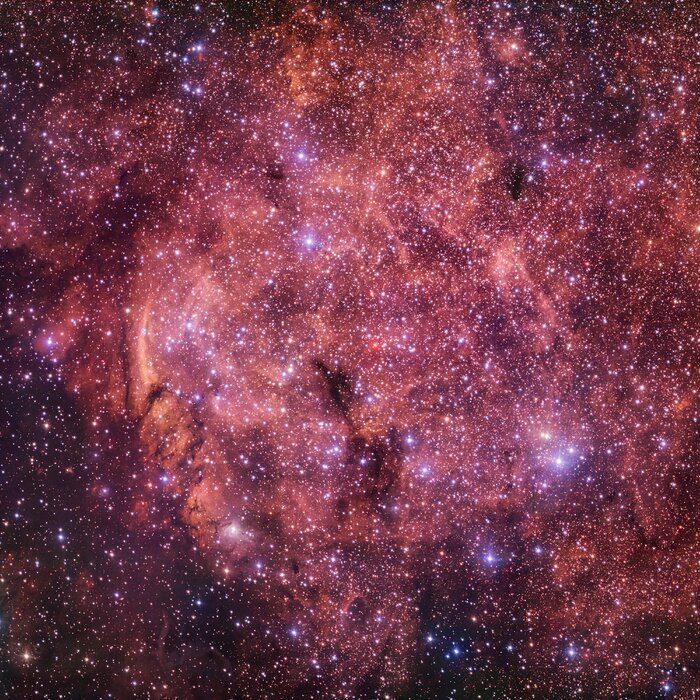Plunge into a stellar ocean
In this Picture of the Week, we take a deep plunge into the ocean of stars in the IC4701 nebula. This nebula is located in the Sagittarius constellation, and it is twice as wide as the full Moon in the sky. The energetic light from newly-born stars ionizes the hydrogen gas in the nebula, causing it to emit the intense reddish hue seen in this picture. The dark clouds in this image contain large amounts of interstellar dust, too dense for the light of the background stars to pierce through it.
The IC4701 nebula is part of a rich and vast complex of dust and gas within which new stars spring to life. When stars are born, most of them are cooler, redder, and less massive than our own Sun. Hotter, more massive stars are much rarer, and they quickly burn through all their fuel and die. This makes these brilliant blue and massive stars, and their surrounding glowing gas, beacons of recent star formation.
Crédit:ESO/VPHAS+ team. Acknowledgement: Cambridge Astronomical Survey Unit
À propos de l'image
| Identification: | potw2310a |
| Type: | Observation |
| Date de publication: | 6 mars 2023 06:00 |
| Taille: | 16823 x 16823 px |
À propos de l'objet
| Nom: | IC4701 |
| Type: | Early Universe : Nebula : Appearance : Emission : H II Region |
| Constellation: | Sagittarius |
| Catégorie: | Nebulae |
Image Formats
Fonds d'écran
Coordinates
| Position (RA): | 18 16 35.00 |
| Position (Dec): | -16° 40' 21.91" |
| Field of view: | 60.00 x 60.00 arcminutes |
| Orientation: | North is 180.0° right of vertical |
Couleurs & filtres
| Domaine | Longueur d'onde | Télescope |
|---|---|---|
| Visible u | 350 nm | VLT Survey Telescope OmegaCAM |
| Visible g | 480 nm | VLT Survey Telescope OmegaCAM |
| Visible r | 625 nm | VLT Survey Telescope OmegaCAM |
| Visible H-alpha | 659 nm | VLT Survey Telescope OmegaCAM |
| Visible i | 770 nm | VLT Survey Telescope OmegaCAM |

